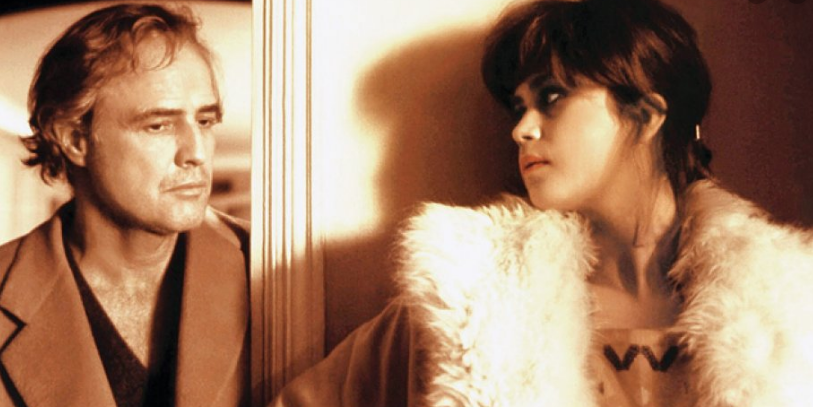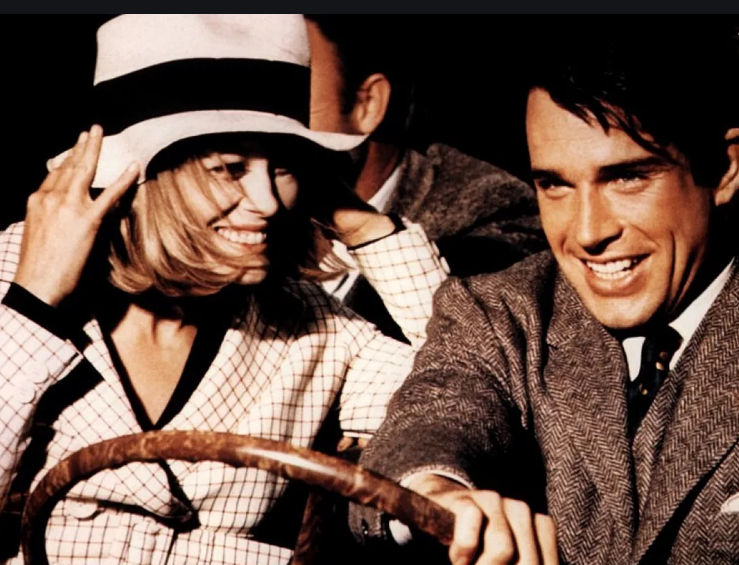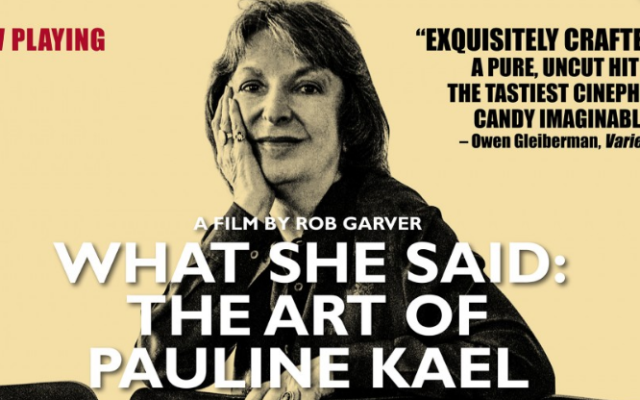Pauline Kael’s Work on Display in New Film
Now a recently produced documentary, “What She Said: The Art of Pauline Kael,” which opens this week in Atlanta, casts an admiring eye on her contribution to film criticism.
During much of the latter half of the 20th century, Pauline Kael’s film reviews in The New Yorker could stir Hollywood moguls to unadulterated rage or cooing self-satisfied acceptance. During her two decades with the magazine, this daughter of Russian Jewish immigrant chicken farmers in Petaluma, Calif., was among the most influential critical voices in the country.
Now a recently produced documentary, “What She Said: The Art of Pauline Kael,” which opens this week in Atlanta, casts an admiring eye on her contribution to film criticism. The film’s creator, Rob Garver, argues, however, that she was more than a reviewer of movies.
“She wasn’t really a film critic,” he said. “She was a writer whose subject was movies. Her reviews weren’t reviews; they were essays. She would go into such depth. She was so definite in her voice, very honest and often rude and very insightful.”
Part of the reason for her success was the vast knowledge of film and literature that she brought to her writing. Growing up Jewish in a small community that didn’t have much to offer in the way of cultural excitement, she immersed herself in books, reading all the great authors with a passion and a focus that later enhanced her critical voice. When her family moved to San Francisco, she brought the same wide-ranging interest in film.

“She came from a lower middle-class Jewish family, not a religious Jewish family,” Garver pointed out. “Her mother was much more interested in culture and academics and really pushed that on her kids. Pauline was the youngest of six and by the time she got to movies, which was later in life, she had this great foundation of literature that made her a great writer.”
But as the film points out, she was not an overnight success. She struggled to make a career as a writer, while, as a single parent, she raised her daughter. Kael was almost 50 before she made a name for herself.
“Pauline was able to put everything she had experienced in life into her writing at The New Yorker,” Garver maintained. “She was like a spigot that opened up and it all came out.”
Her first great success was a 7,000-word defense of the 1967 film “Bonnie and Clyde” starring Warren Beatty and Faye Dunaway, and directed by Arthur Penn, who, like Kael, had Jewish parents who had immigrated from Russia. She defended the film’s graphic scenes at a time when the violence of the Vietnam War was a nightly topic on network news programs.

But more than that, she quickly allied herself with a new generation of bold, creative filmmakers who were putting their stamp on Hollywood with films like “Easy Rider,” which was also a big hit in 1969. According to Garver she had worked hard to get where she did, and she made the most of it.
“When she hit The New Yorker, it was the late 1960s and the American New Wave was coming. ‘Easy Rider’ opened just a few months after she got there. She hit right at the perfect moment for her.”
Not only did she become one of the most influential critics of her era, the four books that she wrote became bestsellers. Her 1973 work “Deeper Into Movies” won a National Book Award.
She detested such popular hits as “The Sound of Music” and “Lawrence of Arabia,” and tore apart highbrow, art house features of the era such as “Hiroshima Mon Amour” and “Last Year at Marienbad.” Still, she could fall for such doubtful artsy films as “Last Tango in Paris,” a 1972 Marlon Brando film that skirted the edges of soft porn.
They are also represented in this documentary, a veritable cornucopia of dozens of classic film clips that film buffs will find fascinating in their representation of a particularly rich period of film history.
She was part of a time in which critical voices carried considerable weight. There was Judith Crist, who was a pioneering female film critic at the New York Herald Tribune and later, the Today show; Joe Morgenstern at Newsweek; Manny Farber at The Nation and Stanley Kauffmann at The New Republic.
But none of them could command the authority and strong belief in her every critical word as Pauline Kael. According to Garver, one of the stories he left out of his film involved an argument she had with Sidney Lumet, who directed 44 films over a distinguished career that stretched over 50 years. Garver said Kael was asked in Lumet’s presence what she thought her job as a film critic should be.
“My job,” she said to this director of such films as “Serpico,” “Dog Day Afternoon,” and “12 Angry Men,” “is to tell him what to do.”
“What She Said: The Art of Pauline Kael” opens Feb. 14 at the Landmark Theatres Midtown Art Cinema.




comments